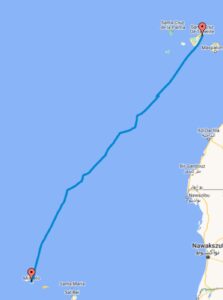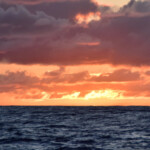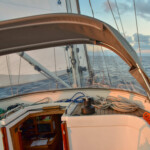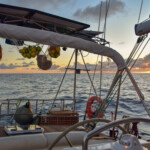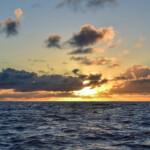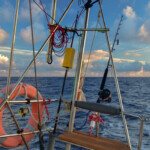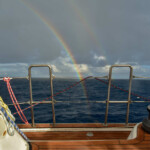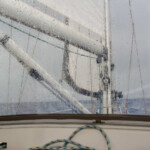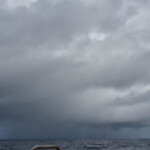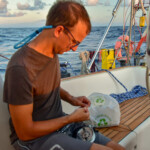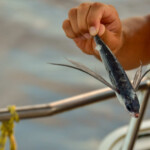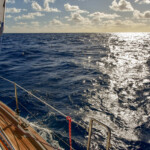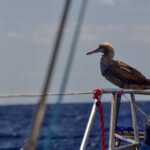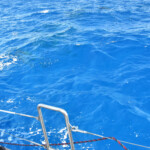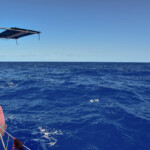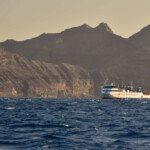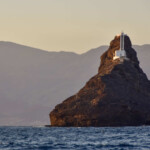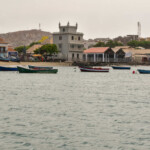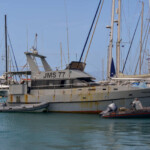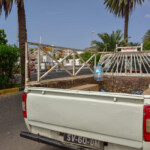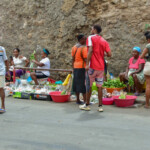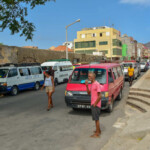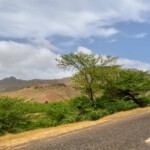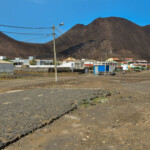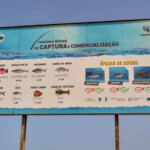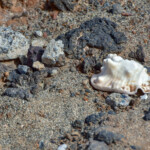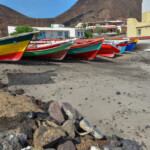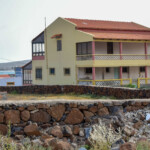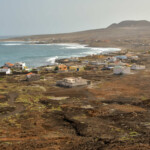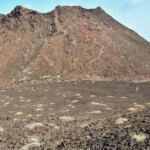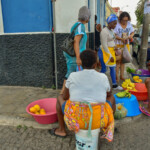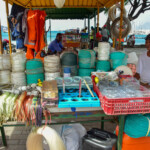On October 18 at noon we will activate the Starlink service. For now, he has charged the subscription amount from the defined card.
The next step is to visit the police with your passports, crew list and yacht documents. I fill out the exit form, attach the crew list and the police stamp it with their seal and the document becomes official.
At 4 p.m. we leave Santa Cruz in Tenerife.
At the beginning there is little wind, so we sail on the engine. We are trying to put up a gennaker, but the wind is too weak even for the gennaker. We leave him dragged into the waves.
About 20 of them dissolve so much that we put up a genoa. At night our gennaker develops, so we have to put it in a bag – it will have to be rolled up properly. In the morning we add the mainsail. With a faith of 10kn we sail for about 6kn. The boat is loaded with about a ton of food and you can feel it.
On October 19, we run the salt water desalination machine for the first time – desalinated water is indeed sweet :-). The measured efficiency is approximately 55l/h of fresh water. She is quite loud but we will work to quiet her down.
At night, on watch, we see red rockets fired. We don’t see anything on AIS or radar. We sail in that direction, but it’s night, there’s no moon, so we find nothing. After an hour of searching, we return to the route.
On October 20, Mateusz casts a fishing line for the first time. No fish were willing to eat our bait, so at 7 p.m. the rod was reeled in without a fish. However, the daily mileage was 150 km and the average speed was over 6 km/h.
On October 21, at night, we again see suspicious lights, similar to those that we took for red rockets the night before, now they look a little different, they appear near Venus, some of them fly horizontally or slightly upwards at first, and then fall down. After about an hour the phenomenon disappears.
In the morning the wind weakens so we make our first attempt to set up the gennaker. When it is ready to be set up, the wind weakens enough that we give up the gennaker and turn on the engine.
While working on the deck, we found a dead flying fish on board – unfortunately, it had been lying there for too long and is no longer edible, which is a pity.
If we are sailing with the engine, we put a bimini top. Before lunch we set up the gennaker – with 10kn of wind we sail almost 6kn.
A large pod of diving dolphins passes us, and we see a whale in the distance – but we are not alone in the ocean.
After lunch the wind increases to 12kn, so we exchange the gennaker for a genoa.
October 22 It’s cloudy and raining all day – that’s good, it will wash away some of the salt from the deck. The fish tied as bait loses its tail – we delude ourselves that it was bitten by a small fish, but this is probably just a dream. The daily mileage is 121nm.
October 23 Mateusz is still trying to catch a fish. We notice a large fender, so we decide to fish it out. Unfortunately, during the maneuvers, the fishing line with the fish without the tail breaks. After getting closer, it turns out that the fender is tied to the net and a small fishing boat is guarding it – we return to the route.
On October 24, at dawn, after the rising of Venus, we again see strange objects that appear and disappear, we decide to ask an astronomy expert what they are. In the morning we find two more flying fish on board – this time it is early and cool, so after scraping they go to the fridge. Tomek is making a mounting for the second mobile panel – there is a chance for more electricity. In the evening, we eat “caught” flying fish for dinner. They are very tasty, although tiny.
On October 25, in the morning, we add the mainsail, but the wave is very choppy – current waves superimpose on the wind waves, so the average speed drops to 5kn. Since the morning we have been struggling with the newly installed solar panel, something in it is not making contact. At first, Tomek thinks it’s a connector, but it turns out that the panel is damaged – such a soft panel cannot be bent, it is only used to attach it to a curved surface. In the evening we reach the Cape Verde Islands and moor at the anchorage at the Mindelo marina. The end of the first stage of the cruise across the Atlantic.
On October 26, after breakfast and a morning swim, we enter the marina. Marinero shows us a place by the pier. I’m going to Marina’s office with the documents. I take cards for entry and water (100l is included in the price) and the deposit for the cards is €10 per item in cash. The currency in Cape Verde is the Escudo (CVE) and has a fixed exchange rate to Euro 110.25CVE to €1.
After paying for the marina, I go to the police (it’s in the second port – about 10 minutes on foot). The policeman takes the yacht’s documents, I fill out the entry form and go to Immigration at the marina to get my passport stamps – unfortunately, they’re repairing the ceiling in the “office”, so I say I’ll come next time. day.
In the evening we go for a short walk around the city and then have a drink at a floating bar.
On October 27, another attempt at Immigration. The policeman is ready to stamp the passports around 10:30 (after further attempts). We decide to take a bus to Calhau on the other end of the island. We get on the bus (aluger) and wait about an hour for departured. The journey takes half an hour on a paved road with a median. Along the way, the bus drops off and picks up subsequent passengers. Only the five of us arrive in Calhau. The trip costs 150CVE per person – we pay in EUR.
The bus stops at the end of the road. We follow the path to the nearby volcano. Various inscriptions made of pebbles are placed in the volcano’s crater. We go downstairs and enter the Hamburg restaurant.
At first we thought it was a joke, but not only are the tasty, large portions, everything is fresh, you can also pay by card and the restaurant has internet access. The only problem is that the last bus to Mindelo leaves at 5 p.m. We eat quickly and take the rest with us. We are returning to Mindelo, and the bus picks up school children and the last passengers along the way – in total, the most people traveling with us are 19 people (the bus has 12 seats). A wonderful trip. We get off at the “station” and return to the yacht.



